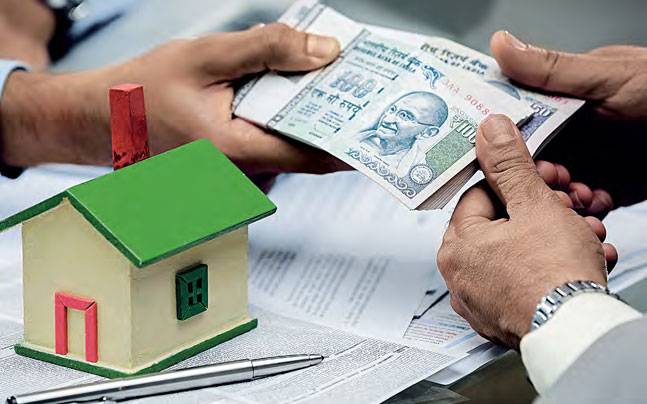A recent slump in the interest rates on Home Loans has made borrowers happy. But, this change is limited to just new borrowers and not the existing ones. If you’re one of those unlucky few who got yourself a Home Loan during a period of inflation, then there’s a way out. Instead of straining yourself financially and taking additional loans to pay off your pending Home Loan, consider fixing the existing one.
Fixing a Home Loan is a fairly new phenomenon that lets borrowers either lower their current interest rates or switch from a floating Home Loan type to a fixed one. You can estimate how significantly you can lower your EMIs by using an online Home Loan EMI calculator. Here’s a couple of insights into this refinancing move.
Why do it?
You should consider this move to avail lower interest on the loan and reduce the burden of EMIs. By reducing the number of EMIs you need to pay, you shorten the loan tenure. You can either continue with the same tenure and pay lower EMIs or you can pay higher EMIs and close the Home Loan faster. This move can be risky if your EMI amount is more than 50% of the monthly income you earn.
What are the Additional Charges Involved?
Banks and NBFCs usually charge a one-time fee for switching loans, the amount of which differs from one financial institution to another. Most borrowers generally skip factoring this expense, which can range anywhere between Rs.5,000 and Rs.15,000.
Before you switch your Home Loan to a new lender, discuss it with your existing lender. Most often than not, your current lender would be open to the idea of letting you change your interest rate type from floating to fixed, in order to retain you as their customer. This, however, will cost you a conversion fee of 1-2% of the outstanding loan amount. This feature is why some people reconsider switching the lender, and also to avoid the documentation process.
How to Make the Most Out of Refinancing?
Though interest rate differences are an important factor to consider when zeroing in on a new loan plan, you need to factor in other requirements as well. You should gauge the total outflow of the payment by calculating not just the interest rate but also the additional expenses involved in the conversion. So, unless the interest rate differential doesn’t give you more than marginal profits, you should reconsider your refinancing approach.
Is there a Best Time to Fix a Home Loan?
There’s no ‘best time’ to fix your Home Loan. But, when the gap between both fixed and floating rates increases to a wide extent and the floating rates are higher than the fixed, that would be a good time to consider this switch.
While the above approach is a great way to help you increase your savings, you should also time your loan refinancing move. When you borrow money, initially the major component of the EMI would comprise more of the interest more than the principal amount. Eventually, the interest component would decrease and the principal component would rise. If you refinance early and bring down the interest charge, this would be beneficial for you in the long run.
What are the Other Alternatives you Can Opt for?
Home Loan Balance Transfer is another refinancing procedure that helps you transfer your Home Loan to a different bank or NBFC that offers better benefits than your existing lender. You’d have to submit a letter to your existing lender asking for a no-objection certificate to successfully transfer your loan to a new lender.
Once you get a statement from your current bank, you can approach your lender and apply for a Home Loan Balance Transfer. The application process for this financial product is similar to applying for a regular Home Loan. Your credit score would influence your new interest rate and the tenure you get for the new loan. Also, having a clean repayment history would help in making your profile look more trustworthy to potential lenders.
The new lender would evaluate your existing loan, check your credit history and employment status, and investigate your financial background and property credentials. Even this product comes with its own set of additional charges that you’d incur at various stages.
Points to remember
Let’s take a look at a couple of things you need to keep in mind to refinance your Home Loan efficiently.
- Research the current markets. If you foresee a slump in the rate of interest, then you should consider refinancing
- You should also consider refinancing when the floating rates of interest on Home Loans are on the rise, but make sure that there’s a significant difference between the floating rate of interest and the fixed one
- Going for a floating rate of interest would prove profitable for you if they’re at the peak of their cycle and are more likely to come down even more
- Find yourself one of the best Home Loan rates by using an online EMI calculator and by comparing the different rates offered by various lending institutions
Now that you know how you can fix your existing Home Loan, switch to a new lender or opt for a plan with a lower rate of interest when the time’s right. Fixing your Home Loan would help you budget well and will aid in increasing your savings considerably in the future. Additionally, switching to a fixed Home Loan with a lower rate of interest would help you shield yourself financially during inflation.
